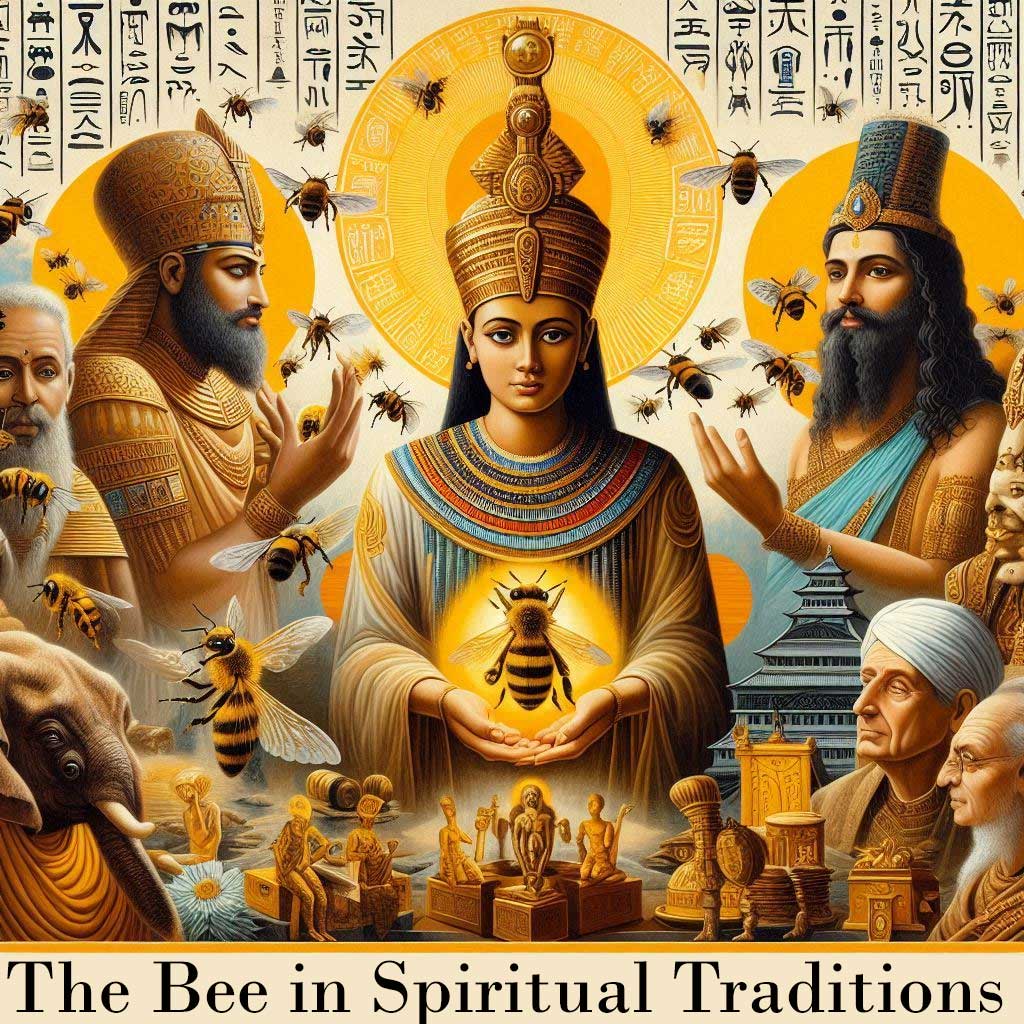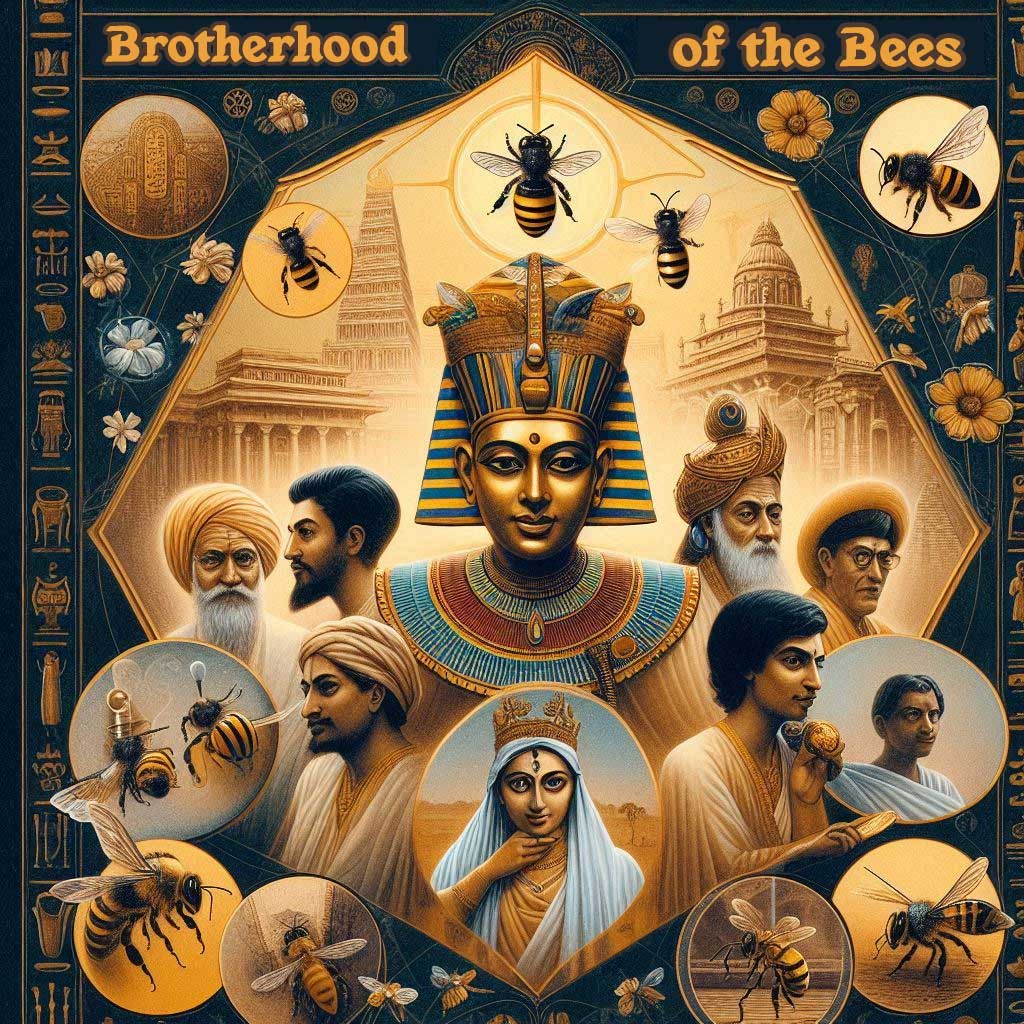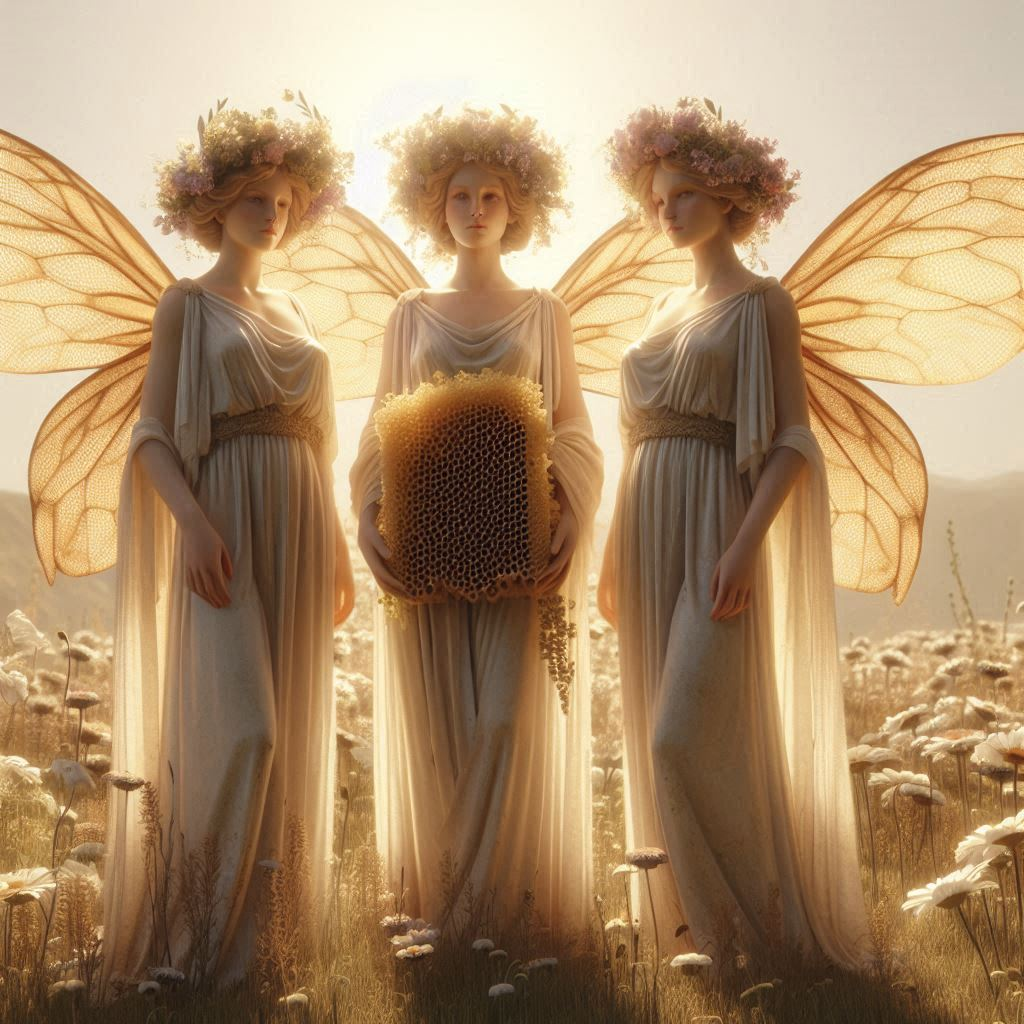
The bee is an important symbol in teachings and mythologies around the world. Ancient Egyptians attached great religious and spiritual significance to the honeybee. Bees were associated with royalty in Egypt, hence the bee headdress; The Hindu gods were often associated with bees. The gods Vishnu, Krishnu, and Indra were called Madhava, the nectar-born ones.

Around the fourteenth century an elusive mystery school known as the ‘brotherhood of the bees’ (because they collected and stored knowledge) held powerful secrets for the art and science of Human Empowerment.
Echoes of their teachings can be found in the work of George Gurdjieff who had contact with the school and further influenced practitioners such as Pamela Lyndon Travers who wrote the Mary Poppins books and Osho.
Bees are regarded by some as an example of a divine intellect woven through nature.
“The bee is more honored than other animals, not because it labors, but because it labors for others.”- Saint John Chrysostom

Why Bee3? The Thrai
The word “Thriae” in Ancient Greek signifies the number three. The imagery associated with the Thriae is both poetic and powerful. They were often depicted as half-women, half-bees—a symbolism that represents both their earthly and divine nature. In ancient Greece, bees were seen as messengers between worlds, gathering wisdom from the flowers of the earth and returning to the heavens. The Thriae, similarly, acted as intermediaries, translating the messages of the gods to the mortal realm.

The Thriae were believed to reside on Mount Parnassus, near Delphi—a place known for its spiritual and mystical significance. These three sisters were gifted with the rare ability to interpret the will of the gods, delivering messages that foretold the future. According to myth, they were linked to Hermes, the messenger god, having been given to him by Apollo, the god of prophecy. The Thriae held immense power in their ability to predict events through the interpretation of omens—especially bird omens—and through the casting and reading of small pebbles, a unique method of divination in ancient Greece.
Their connection to birds adds another layer of meaning. In mythology, birds were often seen as omens, their flights and songs believed to be messages from the divine. The Thriae’s ability to interpret these signs placed them in a revered position as divine oracles. Their wisdom was not just intellectual but instinctive and intuitive, teaching that true knowledge comes from a deep connection with the natural world and an understanding of subtle signs.
Their connection to the birds and the bees also invites us to consider the interconnectedness of all things, and how the answers we seek may be found in the most unexpected places. Just as the Thriae used pebbles and omens to interpret the future, we too can learn to pay attention to the small, subtle clues that guide us on our journey.
The Thriae, with their unique blend of prophecy, intuition, and divine connection, serve as a powerful symbol of the potential within us all. They invite us to tap into our own inner wisdom, to read the signs around us, and to trust in the guidance that comes from the universe. Like the Thriae, we can learn to bridge the gap between the seen and unseen, the known and the mysterious, and in doing so, empower ourselves to shape our own destiny.
Many mythological stories feature triads, like the Fates, the Graces, and the Moirai, emphasizing the power and mystical qualities of the number three. The Thriae’s role as a trio of prophetic figures ties them to this larger symbolic tradition. Representing the triad of mind, body, and spirit—all essential aspects of human potential.
